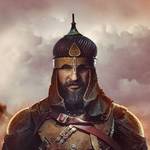Critical evaluation
The research on Medieval Empires provides a detailed analysis of its graphics, engagement strategies, gameplay mechanics, and skill development. However, the analysis lacks depth in critical areas such as Web3 integration and long-term engagement metrics, which are essential for a comprehensive evaluation of the game's performance. Based on the five-tiered rubric, the research falls into the 'Average' category, as it addresses key aspects but leaves significant gaps that hinder a complete understanding of the game's potential in the Web3 gaming landscape.
-
The research does not fully explore the integration of Web3 elements into the gameplay loop, which is crucial for assessing the game's unique identity in the Web3 space.
- While the trailers and promotional materials highlight the game's visuals, they underrepresent the Web3 features, such as blockchain integration and NFT ownership, leaving unanswered questions about how these elements enhance the player experience.
- The analysis lacks concrete data on how Web3 features like land NFTs and peer-to-peer trading impact player engagement and retention, which is vital for evaluating the game's long-term viability.
-
The engagement strategies are discussed, but the research lacks depth in assessing their effectiveness over the long term.
- While the game’s goal progression system and event systems are highlighted, there is insufficient evidence on how these strategies maintain player retention beyond the initial engagement period.
- The analysis does not address potential challenges in the game’s economy, such as resource imbalances or the impact of land ownership on player satisfaction, which could affect long-term engagement.
-
The analysis of skill development and real-world applications is well-covered but lacks critical evaluation of how these skills translate into tangible benefits for players in the Web3 ecosystem.
- While the game fosters skills like resource management and strategic thinking, the research does not explore how these skills align with opportunities in the broader Web3 economy, such as crypto trading or NFT management.
- There is no discussion of how the game’s blockchain literacy components prepare players for real-world applications, such as participating in decentralized finance (DeFi) or managing digital assets.
Follow-up questions
How does Medieval Empires address the risk of economic imbalances, particularly in relation to land ownership and resource distribution, and what measures are in place to ensure fair play for all participants?
- Without understanding the game’s economic balance, stakeholders cannot assess its long-term viability or the potential for player frustration, which could impact retention and overall success.
To what extent does the integration of Web3 features, such as land NFTs and peer-to-peer trading, enhance player engagement and contribute to the game’s unique identity in the Web3 gaming market?
- This question is critical for evaluating how effectively the game leverages blockchain technology to differentiate itself and create value for players, which is essential for its competitiveness in the Web3 space.
How does Medieval Empires plan to scale its engagement strategies to maintain player interest and satisfaction over extended periods, particularly in the face of evolving player expectations and market trends?
- Understanding the game’s long-term engagement strategies is necessary to assess its ability to sustain an active and growing player base, which is crucial for its success and longevity.
What real-world opportunities does the blockchain literacy and technical proficiency gained from playing Medieval Empires provide, and how do these skills align with emerging trends in the Web3 economy?
- This question is important for evaluating the game’s broader value proposition, as it determines whether the skills developed have practical applications beyond the game, enhancing its appeal to a wider audience.




